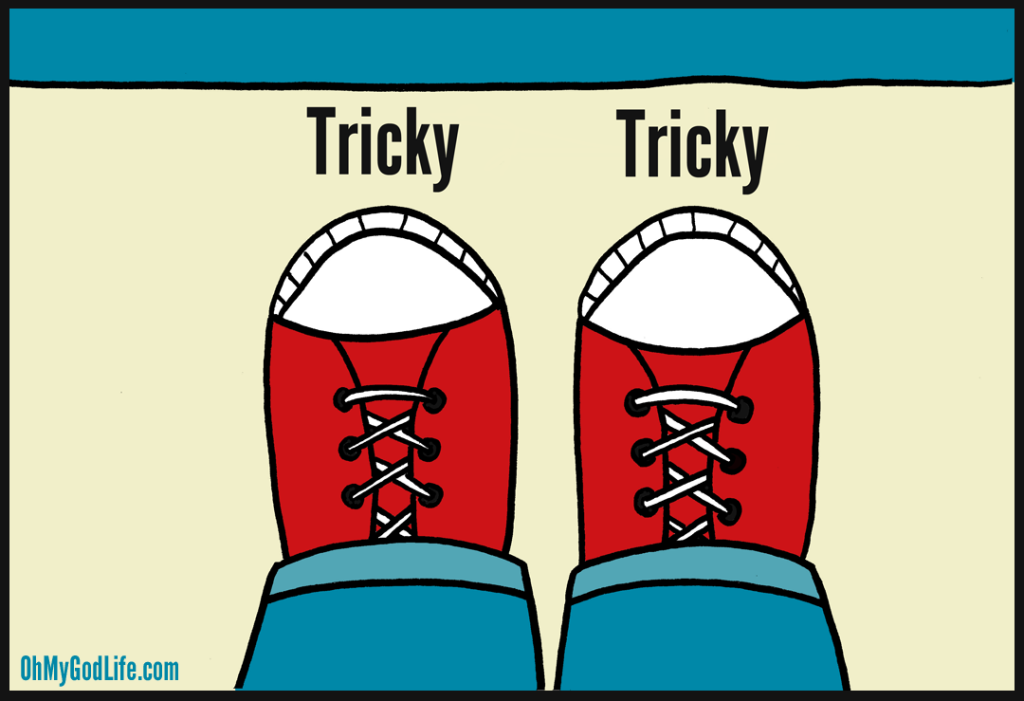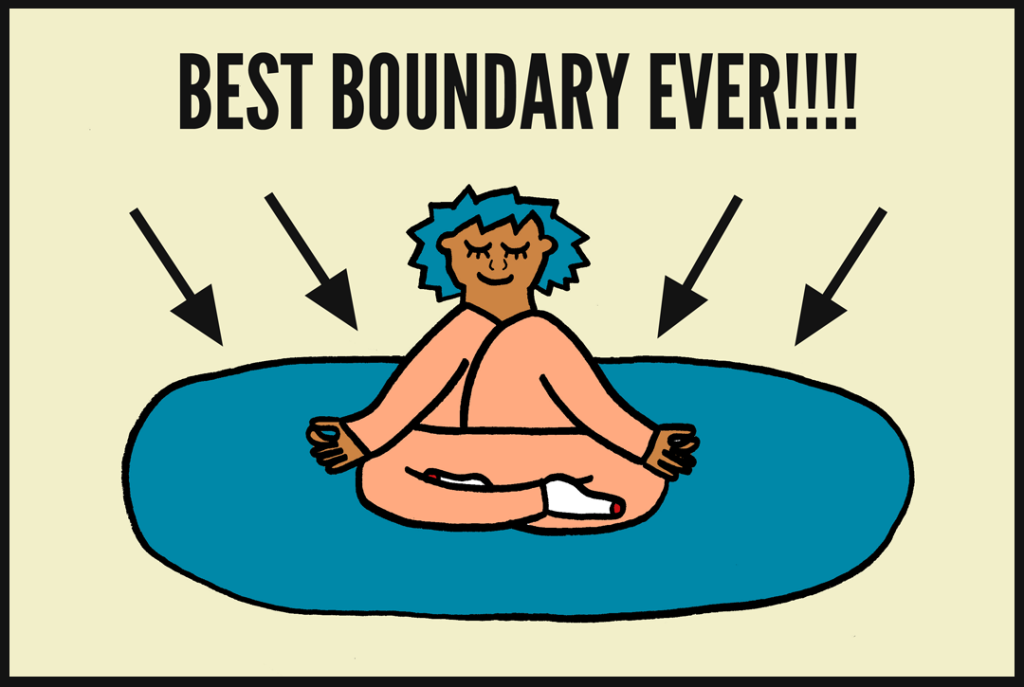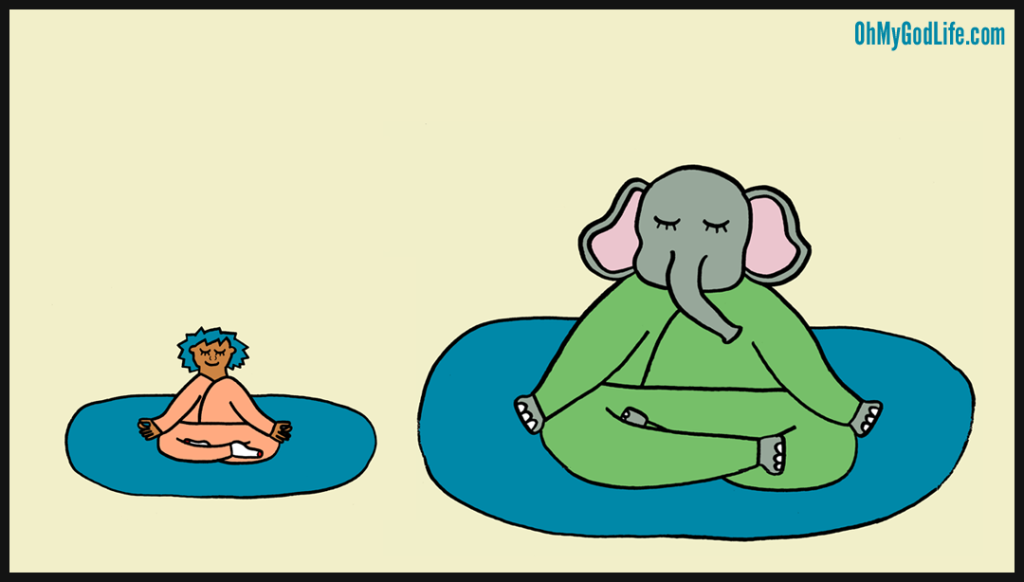
Have you ever tried to set a boundary? (Key word: tried.)
And have you ever had your boundary trampled upon like a herd of caffeinated elephants escaping from the circus?

You and me both, eh?
Here’s the thing:
When you read books about setting boundaries, and they give you that pep talk about how it will completely change your life when you learn to set healthy boundaries, they sometimes neglect to mention how totally frickin’ hard it is to actually do.
In this post, I want to share a little trick I discovered when I was first learning to set healthy boundaries.
It’s very simple, and it goes like this.
When you first learn to set a boundary, you think you have two choices:
Choice #1 is setting the boundary and popping into a state of elevated consciousness because you just set the Best Boundary Ever.

Choice #2 is not setting the boundary at all.

But that’s not how it works!
Okay, maybe it works like that if you’re a reincarnated master who’s been here a million times and can already do everything perfectly.
But for the rest of us, the two choices look more like this:
Choice #1 is setting the boundary and feeling totally conflicted about it.

Choice #2 is not setting the boundary at all.

The process of early boundary setting looks something like this:
You pick Choice #1. You think that Choice #1 is going to pop you into an automatic state of enlightenment. When it doesn’t, because that’s not how Choice #1 actually works, you think you did something horribly wrong because you feel so horribly bad/confused/conflicted. Then you waver on the boundary you set, either giving in right away or after hours/weeks/months of agonizing.
Good times!
But when you understand how Choice #1 actually works, and you know that feeling bad/confused/conflicted actually goes with the territory, then things get a little easier.
Yes, you still have to feel bad/confused/conflicted, but you also get to realize that your alternative is Choice #2: Getting trampled by elephants
All you have to do to inspire yourself not to pick Choice #2 is to remember why you got into this boundary business in the first place:
Because not having healthy boundaries is a lose-lose situation.
Not having healthy boundaries allowed one (or more) elephants to trample through your circus of a life.

Here’s another super cool thing about this Choice #1 business.
After several rounds of choosing the real Choice #1, something magical happens.
Choice #1 morphs into something that kinda sorta resembles the earlier mythical Choice #1:
You set a boundary and you feel only a tiny bit bad/confused/conflicted.
Mostly you just feel good.
It’s an amazing sensation, and it’s totally worth all the agony and effort it took to slog through feeling bad/confused/conflicted.
Your life is calm.
Collected.
Stampede-free!

To inspire you in choosing the real Choice #1, I’ve compiled a list of 6 things you need to know about boundaries, plus the best demonstration of boundaries ever. You can check it out HERE.
Want Sneak Peeks, Insider Info, and other Fun Stuff?! Become a member of OhMyGod Life!


Hi Z,
Like Wow – Divine timing moment! I have a friend that I needed to set a boundary with because I was feeling taken advantage of. I did it but was snarky about it – I had let it go on too long. So do you have a blog post about how to do this nicely? Boundaries are needful, I know, but how to do them diplomatically is tricky for me. I want to be clear what is and isn’t working for me but be respectful of the other person.
Help please!
River (finding her banks)
Hi River, The best thing that helps me with the nice component is figuring out what I’m going to say ahead of time. If I can communicate by writing it out, all the better. Then I’ll run it by my wife so she can check the potential snark factor. If I’m going to be saying something to the person directly, I’ll still come up with key phrases that are communicating my boundary in an empowered but respectful way. Hope that helps! 🙂 XOZ
Z,
Thanks for the ideas. Could you talk more about those key phrases please?
R
Hmmm. Well, the main template I love to use (and that really works!) is “I” statements. Like: “When you did/said this, I felt ——-.” When I’m speaking from a place of feelings – and my experience – it’s harder for the other person to feel defensive. As far as boundaries, I’ll get clear about what I want, (“I’m going to need….” “I’m not going to be able to….” “I need you to….”) and state that. Other than that, the phrases are going to depend on the specific situation. Hope that helps!
Perfect! Thanks! R